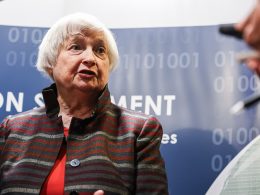US President Donald Trump speaks to reporters while in flight on Air Force One, en route to Joint Base Andrews on April 6, 2025.
Mandel Ngan | Afp | Getty Images
The Trump administration recently announced it would begin a process of overhauling the country’s $1.6 trillion federal student loan system.
The potential changes could impact how millions of borrowers repay their debt, and who qualifies for loan forgiveness.
“Not only will this rulemaking serve as an opportunity to identify and cut unnecessary red tape, but it will allow key stakeholders to offer suggestions to streamline and improve federal student aid programs,” said acting Undersecretary of Education James Bergeron in a statement on April 3.
Around 42 million Americans hold federal student loans.
Here are three changes likely to come out of the reforms, experts say.
1. SAVE plan won’t survive
Former President Joe Biden rolled out the SAVE plan in the summer of 2023, describing it as “the most affordable student loan plan ever.” Around 8 million borrowers signed up for the new income-driven repayment, or IDR, plan, the Biden administration said in 2024.
The plan has been in limbo since last year, and in February a U.S. appeals court blocked SAVE. The 8th U.S. Circuit Court of Appeals sided with the seven Republican-led states that filed a lawsuit against SAVE, arguing that Biden was trying to find a roundabout way to forgive student debt after the Supreme Court struck down his sweeping loan cancellation plan in June 2023.
SAVE came with two key provisions that the legal challenges targeted: It had lower monthly payments than any other federal student loan repayment plan, and it led to quicker debt erasure for those with small balances.
More from Personal Finance:
Why the stock market hates tariffs and trade wars
Why Fed chair wears purple ties — ‘we are nonpolitical’
Don’t miss these tax strategies during the tariff sell-off
The Trump administration is unlikely to continue to defend the plan in court, or to revise it in its regulations, experts say.
“It’s difficult to see any scenario where SAVE will survive,” said Scott Buchanan, executive director of the Student Loan Servicing Alliance, a trade group for federal student loan servicers.
For now, many borrowers who signed up for SAVE remain in an interest-free forbearance. That reprieve will likely end soon, forcing people to switch into another plan.
2. End to loan forgiveness under other plans
The Trump administration recently revised some of the U.S. Department of Education’s other income-driven repayment plans for federal student loan borrowers, saying that the changes were necessary to comply with the recent court order over SAVE.
Historically, at least, IDR plans limit borrowers’ monthly payments to a share of their discretionary income and cancel any remaining debt after a certain period, typically 20 years or 25 years.
The IDR plans now open are: Income-Based Repayment, Pay As You Earn and Income-Contingent Repayment, according a recent Education Department press release.
As a result of the Trump administration’s revisions, two of those plans — PAYE and ICR — no longer conclude in automatic loan forgiveness after 20 or 25 years, Buchanan said, noting that the courts have questioned the legality of that relief along with SAVE.
The Trump administration, through its changes to the student loan system, is likely to make at least some of those temporary changes permanent, said higher education expert Mark Kantrowitz.
Still, if a borrower enrolled in ICR or PAYE switches to IBR, their previous payments made under the other plans will count toward loan forgiveness under IBR, as long as they meet the plan’s other requirements, Kantrowitz said. Some borrowers may opt to take that strategy if they have a lower monthly bill under ICR or PAYE than they would on IBR.
3. Narrowed eligibility for PSLF
President Donald Trump signed an executive order in March that aims to limit eligibility for the popular Public Service Loan Forgiveness program.
PSLF, which President George W. Bush signed into law in 2007, allows many not-for-profit and government employees to have their federal student loans canceled after 10 years of payments.
According to Trump’s executive order, borrowers employed by organizations that do work involving “illegal immigration, human smuggling, child trafficking, pervasive damage to public property and disruption of the public order” will “not be eligible for public service loan forgiveness.”
For now, the language in the president’s order was fairly vague. Nor were many details given in the latest announcement about reforming the student loan system, which said the Trump administration is looking for ways to “improve” PSLF.
As a result, it remains unclear exactly which organizations will no longer be considered a qualifying employer under PSLF, experts said.
However, in his first few months in office, Trump’s executive orders have targeted immigrants, transgender and nonbinary people, and those who work to increase diversity across the private and public sector. Many nonprofits work in these spaces, providing legal support or doing advocacy and education work.
Changes to PSLF can’t be retroactive, consumer advocates say. That means that if you are currently working for or previously worked for an organization that the Trump administration later excludes from the program, you’ll still get credit for that time, at least up until when the changes go into effect.
Source link









